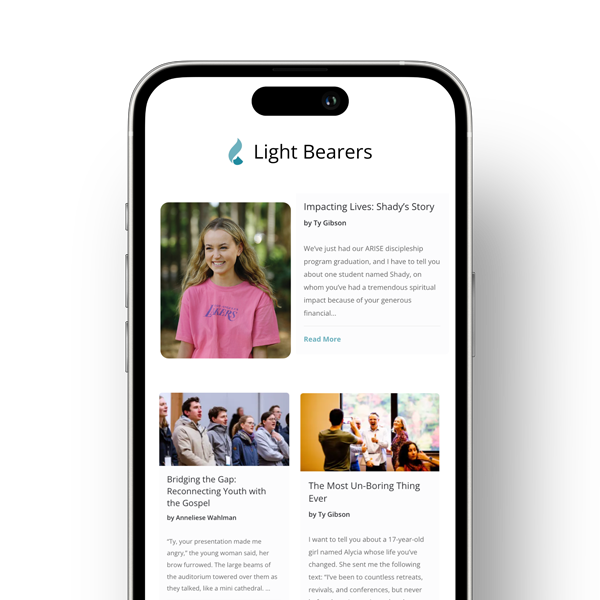Holidays are over. The time to excuse our excess is behind us. Now, with a few extra pounds and a sense of guilt, we are on to making enthusiastic compensatory resolutions. It’s reported that the majority of resolutions pertain to weight and health. The sad part is only 8 percent of these resolutions succeed, while 80 percent fail in a couple months.1 Trying to lose weight has become a cyclical affair, at least for those who haven’t given up.
Resolving to change, failing, gaining more weight, and starting the process again at New Year’s is so common that the National Institute of Health has given it a term: the false hope syndrome.
I admire people who don’t give up. However, it’s a law of our nature that if what we’re working towards becomes seemingly impossible to attain, we’ll eventually quit trying. With the false hope syndrome, “people appear to behave paradoxically, by persisting in repeated self-change attempts despite previous failures. It is argued, though, that self-change attempts provide some initial rewards even when unsuccessful. Feelings of control and optimism often accompany the early stages of self-modification efforts. In addition, unrealistic expectations concerning the ease, speed, likely degree of change, and presumed benefits of changing may overwhelm the knowledge of one’s prior failures. It is thus important to learn to distinguish between potentially feasible and impossible self-change goals in order to avoid overconfidence and false hopes leading to eventual failure and distress.”2 Apparently, part of the paradox is that the initial feelings of control and optimism are the reward that fuel repeated efforts, in spite of the fact that they are 92 percent doomed to fail.
When seeking to understand how our efforts can succeed, we might find some wisdom in the old saying, It’s not the horse that draws the cart, it’s the oats. What gets the horse to do the hard work of pulling is the anticipated reward.
Recently I heard Tinier Tim, a man who lost over 200 pounds, say, “You are far more likely to have weight problems because of the stuff you put in your head than because of the stuff you put into your mouth.”3 In other words, weight loss has to involve addressing what’s in the head more than what we are eating. Tim suggests the first step to weight loss is realizing what I am eating and why I am eating it.
It’s true that our environment lends itself to weight gain: from fast food, pollutants, and food advertising to larger plate sizes, the thrill of video games versus playing outside, and a lack of safe parks to walk. We can acknowledge all that and still miss the point though. What are you eating and why are you eating it? The problem in the head must be identified and the solution must meet the problem where it exists.
“You are far more likely to have weight problems because of the stuff you put in your head than because of the stuff you put into your mouth.”
For a while the controversy over whether obesity is a disease or contributing factor to disease was prominent. Well, disease can be defined in the following ways:
“A condition of the body, or of some part or organ of the body, in which its functions are disturbed or deranged; a morbid physical condition; a departure from the state of health, especially when caused by a structural change.”4
“A condition in which bodily health is seriously attacked, deranged, or impaired. Pathologically, disease is an alteration of state of the human body… or of some of its organs or parts interrupting or disturbing the performance of the vital functions; any departure from the state of health presenting marked symptoms… various forms of disease may be caused by parasites, filterable viruses, and nutritional, environmental or inherent deficiencies.” 5
“An effort of nature to free the system from conditions that result from a violation of the laws of health. In case of sickness, the cause should be ascertained. Unhealthful conditions should be changed, wrong habits corrected.”6
Whether you define obesity as a disease or not, aspects of these definitions apply, and of great importance is understanding that the cause should be ascertained. What is driving our behavior? While 80-90 percent of weight loss is achieved by altering food intake (what we eat and how much we eat), 80-90 percent of why we are obese is not about food intake. What we eat and how much we eat must be addressed, but dealing with the oats in our head is the way to achieve long-term success.
…the solution must meet the problem where it exists…
In its outline addressing the problem behind food addiction, Celebrate Recovery lists possible realities: “Throughout our lives many of us have turned to food to ease our pain or fear. We felt comfort in eating and found ourselves turning to food whenever we were hurt, angry, or frustrated. Food became our comforter, our friend. Some of us may have specific food that we have trouble eating in healthy amounts and once we start eating it, we cannot stop. Some of us may have been emotionally, physically, or sexually abused and use food to cope with the emotions of those events. Some of us may have had healthy eating habits as children or young adults, but at some point in our lives we chose to overeat and lost the ability to discern when we were physically hungry or when we were physically full. Many of us have tried various diet programs, exercising, medications, or many other ways of trying to control our eating habits. We have failed over and over and are left feeling guilty, incapable and unlovable…”7
This is what it can look like when we dig into why we eat. Because the solution must meet the problem where it exists, acknowledging the emotional and spiritual components is essential. The good news is that when we seek for emotional and spiritual healing, we can look beyond diet and exercise plans, as important as these can be. We can replace the false hope syndrome with the Source of hope solution.
If you’ve waited for January to try losing weight, maybe you’re not ready to lose weight. The decision and determination must be based on something more lasting than a month. The new year, however, is a good opportunity to decide that it’s time to become your God-ordained, God-healed best self. He wants to become the oats in your head.
- Kelsey Mulvey, “80% of New Year’s resolutions fail by February—here’s how to keep yours,” Business Insider, 1/3/17. http://www.businessinsider.com/new-years-resolutions-courses-2016-12.
- J. Polivy, “The false hope syndrome: unrealistic expectations of self-change,” Int J Obes Relat Metab Disord, https://www.ncbi.nlm.nih.gov/pubmed/11466595.
- http://tiniertim.com.
- S. Heshka & D.B. Allison, “Is obesity a disease?,” International Journal of Obesity, (2001) 25,1401-1404, https://www.nature.com/articles/0801790.
- Ibid.
- Ellen G. White, Ministry of Healing, p. 127.
- “Food Addiction,” Celebrate Recovery, http://www.celebraterecovery.com.

Risë Rafferty, RDN
Risë is a Registered Dietitian Nutritionist (RDN) and has been writing and teaching about health for many years. She loves the health message and takes great pleasure in seeing people thrive by the application of its principles. Her research and down-to-earth manner allow her to offer up the health message in both an intelligent and accessible manner. She and her husband, James Rafferty, have two children.



